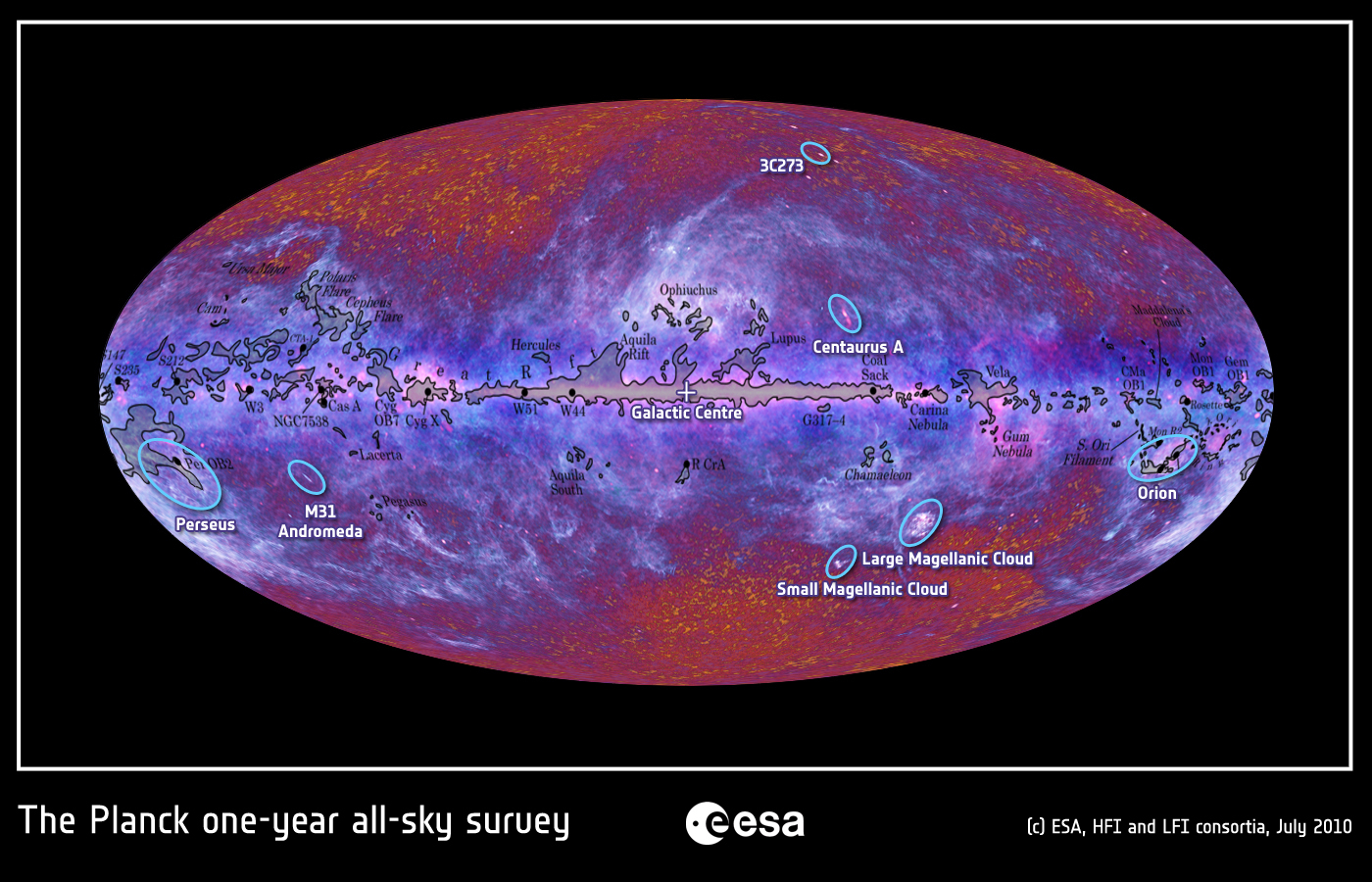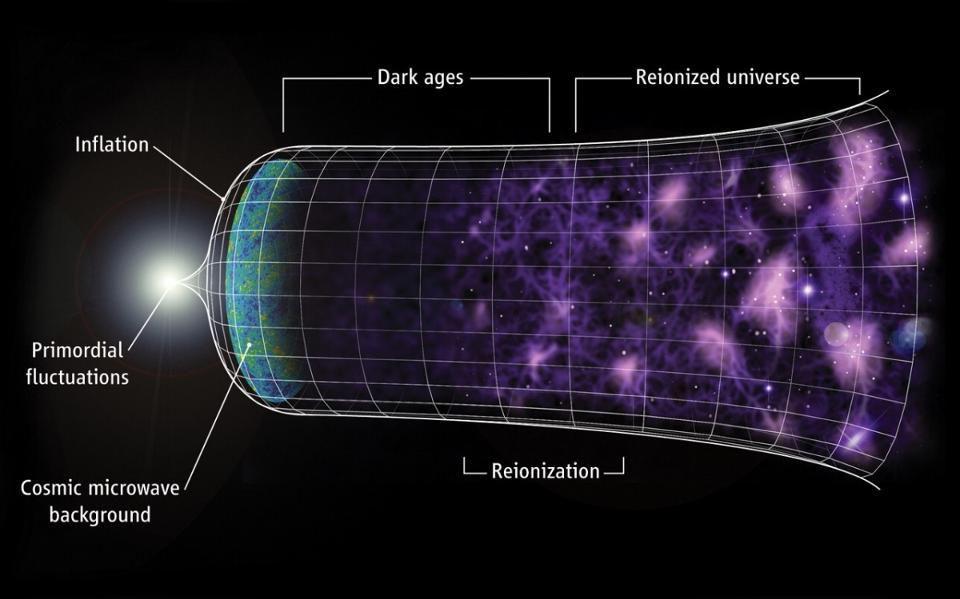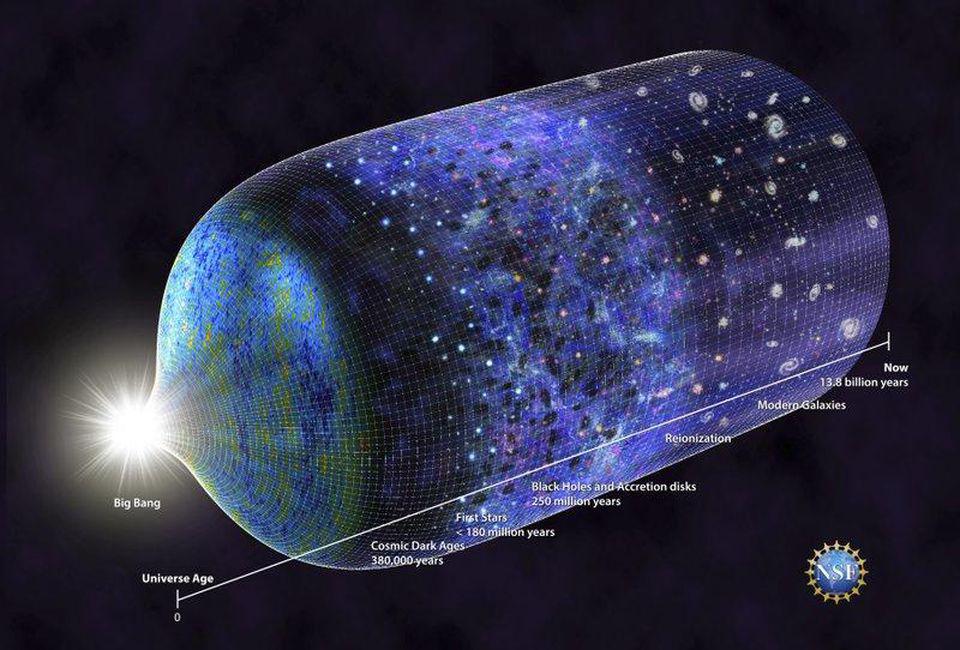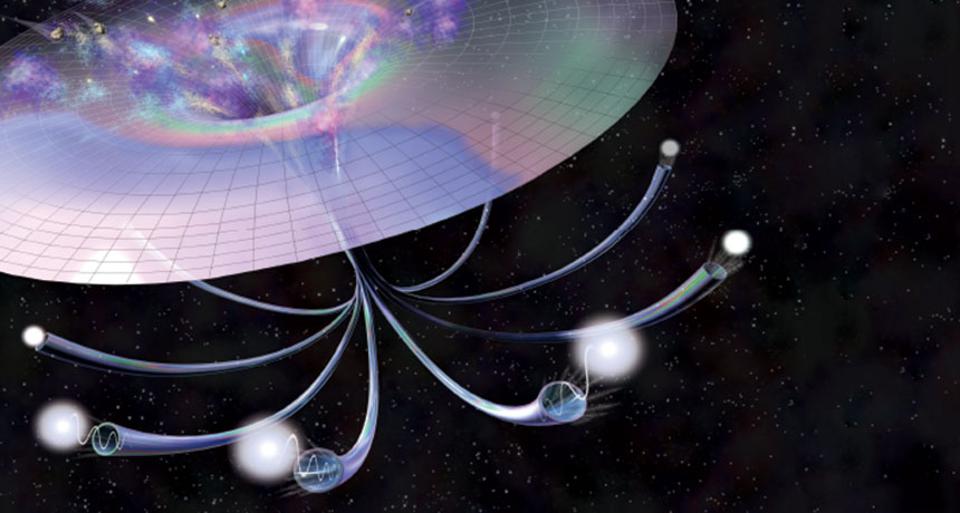Ask Ethan: How did the Universe truly begin?

- When it comes to the question of our cosmic origin, a series of remarkable observations led to the Big Bang becoming the leading theory describing our cosmic origins.
- However, it soon became clear that there were puzzles the Big Bang, on its own, couldn’t explain, leading to a new theory that made incredible predictions that were later borne out: cosmic inflation.
- Yet cosmic inflation, as we understand it, couldn’t have been the absolute beginning of everything. The question of our ultimate cosmic origins are still an open one, from a scientific perspective.
One of the biggest questions — perhaps the biggest question of all — that we can ask about our Universe is where, if we go all the way back, it came from. Before the stars and galaxies, before the emergence of atoms, before the very first moment of time ever passed-and-elapsed, how did it all begin? It’s a question that many of us wonder about, and a question that, despite our best efforts, science still doesn’t have a convincing, compelling answer for that’s supported by actual, measurable data.
Still, it never hurts to ask the biggest questions of all, and take stock of where we are at present. That’s what both Jeff Pawlowski and Basil Hammer want to know, writing in to (respectively) ask:
“I would like to read a discussion on why the big bang took place, the very [first] one, and not the simple answer that ‘[this] is a recurring event.'”
“[I]f eternal inflation is true, but time is still finite, where [might] the universe have come from? Because there still needed to be a beginning, right?”
To dive into this question and truly do it justice, we’re going to have to separate out three commonly confused and conflated things, and then talk about all three:
- The hot Big Bang, as it applies to our Universe,
- The theory of cosmic (or cosmological) inflation, and how it precedes and sets up the Big Bang,
- And then the question of an ultimate beginning or origin to our Universe, and how both inflation and the original idea of the Big Bang are dissatisfying for providing such an answer.
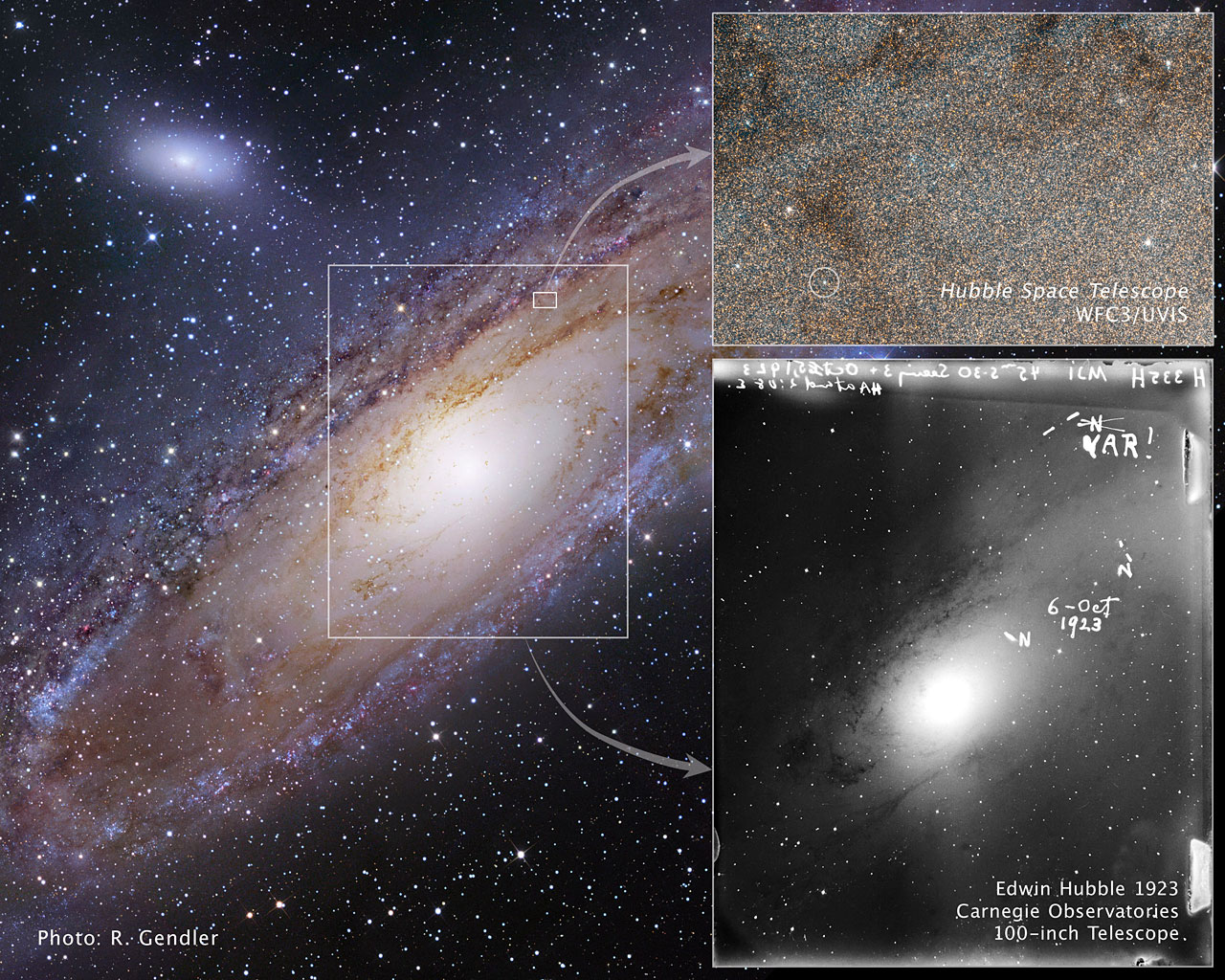
The hot Big Bang
In the early 20th century, four important pieces of information — one theoretical and three observational — came together in an absolutely revolutionary way. They were as follows:
- On the theoretical front, Alexander Friedmann had shown, within the context of Einstein’s general relativity, that a Universe uniformly filled with any form of matter-and-energy cannot be static and stable, but must expand or contract, with the rate of expansion/contraction determined by the overall energy density of space.
- Observationally, Henrietta Leavitt established a relation between the period of brightening-and-faintening Cepheid variable stars and their intrinsic brightness: the period-luminosity relation.
- Observationally, Vesto Slipher measured the amount that light is shifted (redshifted or blueshifted) from our frame-of-reference within the Solar System of “spiral and elliptical nebulae,” before we even knew they were galaxies, and determined that they must be receding from us at incredibly large speeds: up to thousands of km/s.
- And then observationally, Edwin Hubble (and with him, Milton Humason) began identifying variable stars — the same types of variable stars that Henrietta Leavitt had identified a period-luminosity relationship between — in those spiral and elliptical nebulae, allowing us to measure their distances and confirming their extragalactic nature.
These four pieces of information, when put together, led to the idea of the expanding Universe.
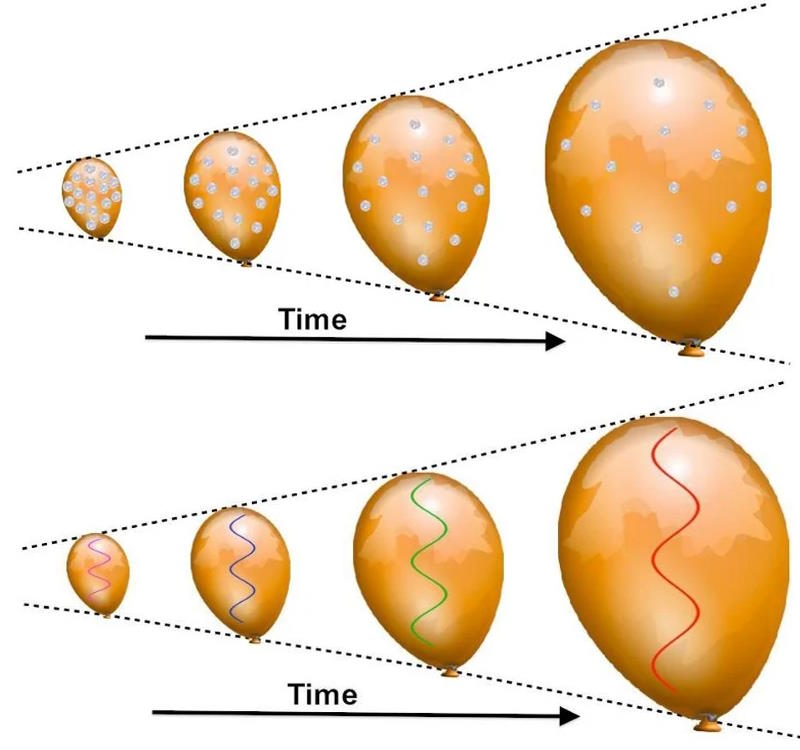
So if the Universe is expanding, what does that imply?
Going forward in time, it means that as space itself expands, the matter within the Universe dilutes to lower densities, because matter is made of a fixed number of particles, but as space expands, the volume it occupies continues to increase. Hence, the Universe gets less dense over time.
For radiation, like photons (or light waves), not only does it dilute to lower densities, but because the energy of a light wave (or a photon) is determined by its wavelength, then as the fabric of space itself “stretches” to greater distances, the energy of each light wave stretches as well, causing the Universe to not only expand and dilute, but to cool as well.
However, that means if we consider what happens to the matter and radiation in the Universe if we run the clock in the other direction — backward in time — we find that precisely the opposite conditions would have occurred: the Universe, when it was younger, would have been both denser and hotter. Go farther back in time, and all the matter and radiation would have occupied a smaller volume, making the Universe denser. The light that was stretched by cosmic expansion, if you run the clock backward, would have had its wavelength shortened in the past, leading to hotter conditions and higher temperatures. And if you imagine going all the way back, as far as the laws of physics will let you, you’ll arrive at a singular state: where all of the matter-and-radiation were contained within a single point of infinite density and temperature.

This was the original notion of the Big Bang, and working out the physical details of how matter and energy should interact in this early, hot, dense environment led to five “cornerstone” predictions of the theory.
- The Universe should be expanding, displaying an unambiguous redshift-distance relation among extragalactic objects.
- The Universe should have begun somewhat uniform, and cosmic structures like stars, galaxies, groups/clusters of galaxies, and a large-scale cosmic web should form and grow progressively over time.
- The Universe was hotter in the distant past, hot enough at one point that neutral atoms couldn’t stably form, leading to the prediction of a relic, low-temperature, omnidirectional, blackbody-spectrum-having radiation background (the Cosmic Microwave Background) today.
- The Universe was once so hot in the distant past that even atomic nuclei couldn’t stably form, leading to the prediction of relative abundances of light elements: hydrogen, helium, lithium, and their various isotopes, all formed in the crucible of the early Universe.
- And the Universe should have once been so hot that neutrinos played an important cosmic role, leading to a 5th prediction that has only recently been confirmed: that these cosmic neutrinos should leave detectable imprints in both the large-scale structure and the leftover radiation from the Big Bang.
With strong observational support for all five predictions, the Big Bang reigns unchallenged as our leading theory of the early Universe, as it has been since the mid-1960s: when the Cosmic Microwave Background was first discovered.

Cosmic inflation
But even as evidence was accumulating for the hot Big Bang in the 1960s and 1970s, puzzles emerged as well: things that were observed, but that the Big Bang itself couldn’t explain. For example, if the Universe began from a singular state of arbitrarily high temperatures and densities, then there are at least three observations that simply don’t make sense.
- The horizon problem: if we look in different directions, we see the Universe as having the same temperature and density everywhere. But even since the start of the hot Big Bang, these regions never had time to communicate, exchange information, or reach thermal equilibrium with one another. So how did they evolve to reach the same temperature and conditions everywhere?
- The flatness problem: in an expanding Universe, in general, there’s a “fight” between the initial expansion rate that drives things apart and the gravitational effects that work to bring everything back together. In our Universe, we observe that these two opposing forces are pretty much perfectly, exactly balanced, leading to an exactly spatially flat Universe. So why was our Universe born with those properties?
- The monopole (or ancient relic) problem: if the Universe reached these arbitrarily high temperature and energy conditions, then why are there no exotic, leftover heavy relics: right-handed neutrinos, magnetic monopoles, and other particles that should be observable and left over today?
We can always shrug our shoulders and mutter something like, “Those must’ve just been the initial conditions, or the way the Universe was born,” but that runs counter to the enterprise of science. Instead, we look for a mechanism that would mandate and set up these conditions.

That mechanism sprung forth in 1980 in a remarkable paper by Alan Guth, who noted explicitly that an early, rapid, and relentless phase of exponential expansion — where the Universe’s energy was not distributed among matter and radiation quanta, but rather was inherent to the fabric of space itself (either in a field or via some other mechanism) — would solve all three of these problems.
- The reason the Universe had the same temperature and density everywhere comes about because in the past, things were causally connected: they were “stretched” to be far apart by this early expansion phase.
- The reason the Universe appears flat, today, is because regardless of how it started off, inflation “stretched” things so that the part that’s visible to us appears indistinguishable from flat.
- And the reason there are no ancient leftover relics is because the Universe never reached arbitrarily high energies or temperatures: just the maximum temperature that was achieved in the aftermath of the end of inflation.
By providing a mechanism by which these three observables could be explained, inflation presented a powerful alternative to the standard hot Big Bang. Once additional problems were solved to show how an isotropic, homogeneous early Universe could be recovered at the end of inflation, something else became remarkably clear: that inflation would provide a quantum mechanism for seeding the Universe with initial imperfections, or the seeds of cosmic structure, that would later become observable in detail.

Inflation would make many testable predictions about the seeds of cosmic structure that should appear, in both the Cosmic Microwave Background and also in the large-scale structure of the Universe, as well as setting a cutoff for a maximum temperature that ought to be observed: far below the Planck scale. These predictions, made in the 1980s, were borne out by observations made from the 1990s to the present, including:
- a spectrum of imperfections — density and temperature fluctuations — that are almost, but not perfectly, scale-invariant,
- density imperfections that are 100% adiabatic and 0% isocurvature in nature,
- fluctuations on super-horizon scales, which are larger than a signal moving at the speed of light in an expanding universe could create,
- and a finite maximum temperature to the universe during the hot Big Bang, which should be significantly smaller than the Planck scale.
Because inflation represents an exponential expansion of space, though, rather than one that terminates in a singularity like the original model for the Big Bang, however, it sets up a very different picture of the beginning: of a “whoosh” that led to a Big Bang, rather than the emergence of time and space from a singular state.

An ultimate beginning?
Now, we get to address the really big questions: what does all of this mean for the “true” beginning of the Universe, if such a thing even existed?
Back when we were only considering the hot Big Bang (without inflation), we could extrapolate back and reach a singular state — where the size of the Universe would go to zero — in a finite amount of time. But because inflation expands space in an exponential fashion, it’s impossible to extrapolate it back to a singularity; with exponentials, it would take an infinite amount of time to go back to a state where the Universe had zero size.
To make matters worse, the observable evidence that we have for inflation, where these quantum fluctuations generated by inflationary processes get imprinted on our visible Universe in ways we can measure and detect, is confined to only about the final ~100 or so “doublings” of the Universe before inflation ends. This is monstrously insufficient for what we want to know, as this corresponds only to a time period of about the final ~10-32 seconds before inflation ends and gives rise to what we know as the hot Big Bang. If we were hoping that we could just “push off” a singular beginning to an earlier epoch, inflation squashes that hope; there is nothing we can observe that tells us anything about what, if anything, gave rise to inflation.
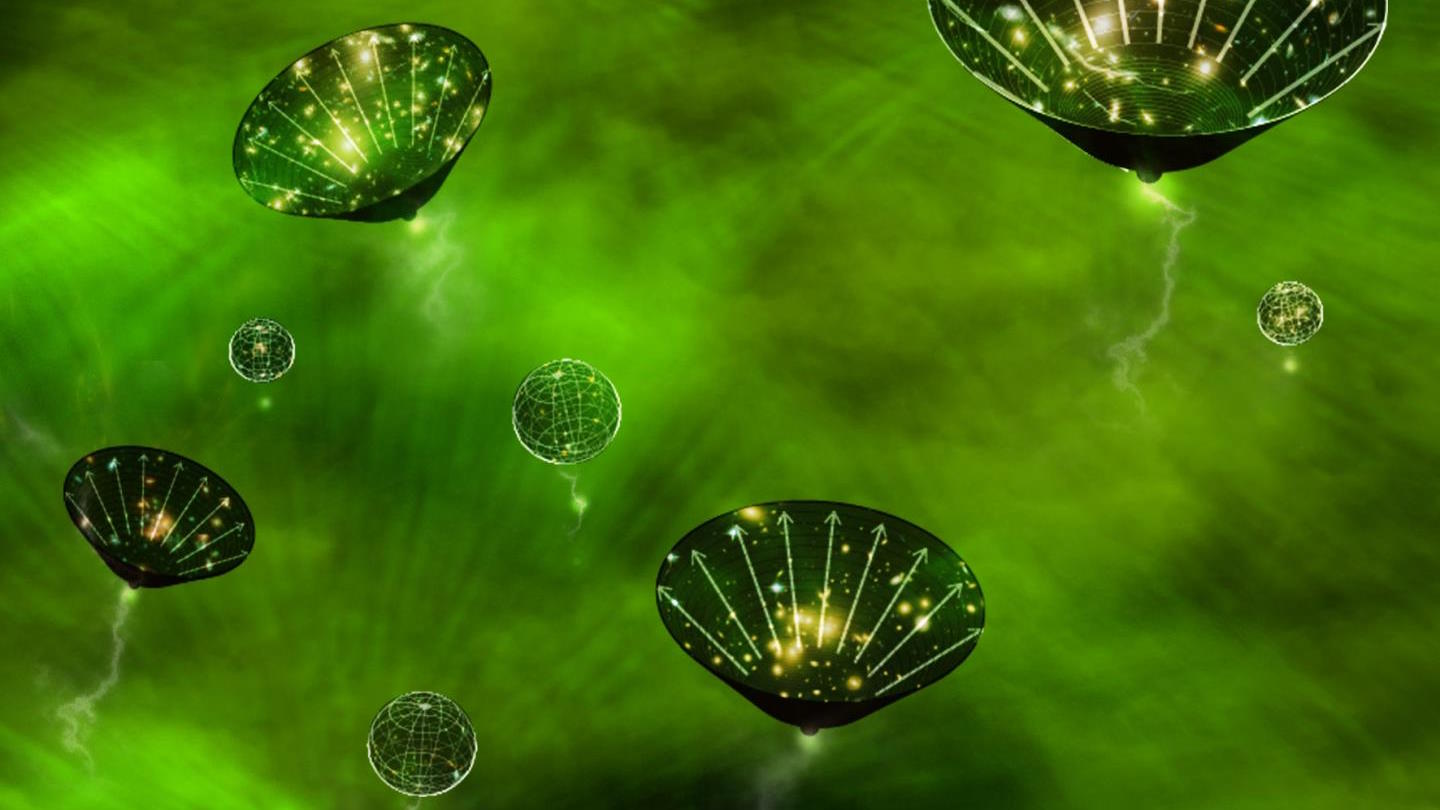
One aspect of inflation that’s fascinating is known as eternal inflation. If you look at the details of how inflation works, pretty much any model of inflation that you can construct that actually works — that gives you enough inflation to solve those three problems with the original Big Bang and produces the quantum effects necessary to seed the Universe with the imperfections that lead to our large-scale cosmic structure — will cause your Universe to expand in such a way that while inflation ends in some regions of space (like our own), leading to a hot Big Bang, there will be infinitely more, surrounding regions where inflation continues, generating more space that continues to inflate.
In other words, once inflation begins, it not only wipes out any information of what existed before, but the inflationary state will persist, eternally, into the future. Sporadically, due to the same quantum fluctuations that seed the structure of the Universe, there will be individual regions where inflation does end and a hot Big Bang ensues, but they will be spectacularly outnumbered by regions where inflation never ends. In fact, no two independent regions where Big Bangs occur will ever overlap, as the inflating Universe drives them apart.
However, as tempting as it is, even eternal inflation has its limits: it’s only eternal to the future, not to the past. In fact, it can be (and has been) proven that inflationary spacetimes are not past-timelike-complete, and must have emerged from some prior, non-inflationary (and possibly singular) state itself.
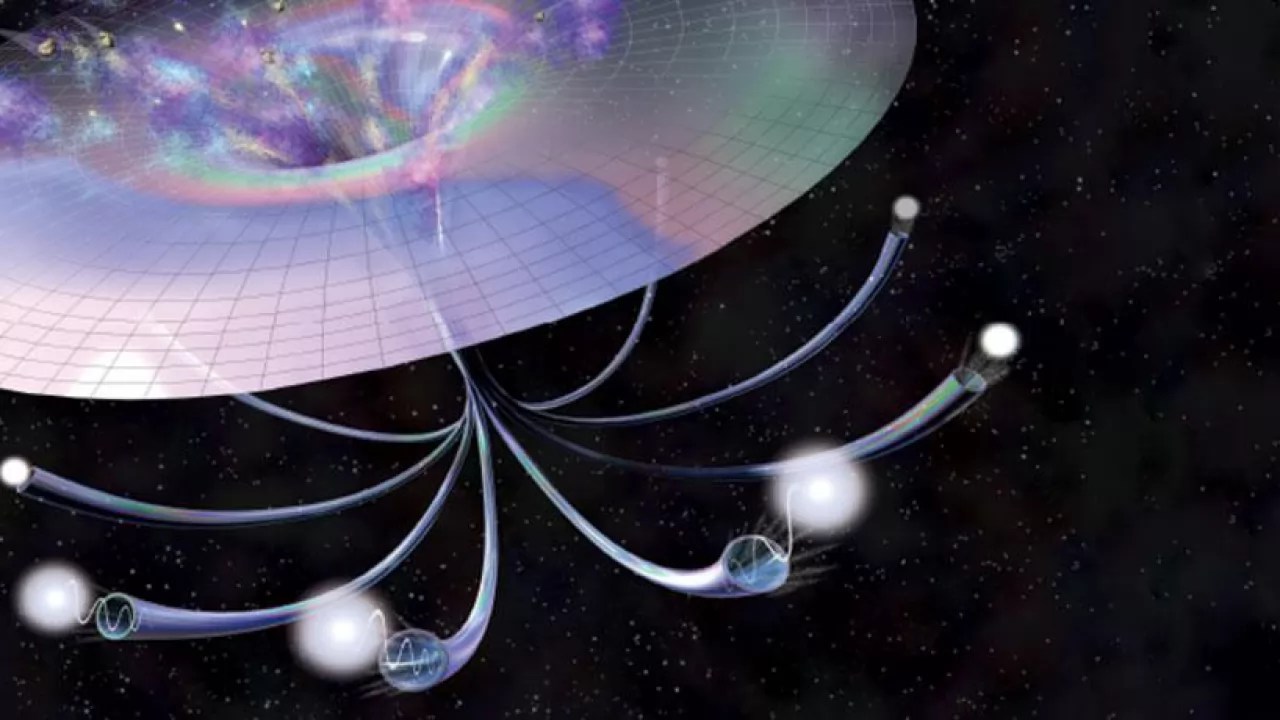
You can’t weasel your way out of this past-timelike-incompleteness by appealing to alternatives to inflation either, such as bouncing cosmologies or cyclic cosmologies, as those have been shown to suffer from the same problems. But that, alone, isn’t enough to tell us that the Universe must have begun from a singularity, either. It may have begun from a singularity, but that’s not a necessity. For example, you can also easily design a past-timelike-complete spacetime where inflation occurs just by modeling the scale factor of your Universe (whose change over time determines the expansion rate) as a “growing exponential plus a constant” rather than a pure, growing exponential on its own.
All of which is to say:
- The hot Big Bang may be the best description we have of our early Universe, but it wasn’t the very beginning, as there’s a cutoff in how far back you can extrapolate the temperature and density of our matter-and-radiation rich Universe.
- Before the hot Big Bang, there was a period of cosmic inflation, which set up and gave rise to the hot Big Bang, where space was full of energy, not matter-and-radiation, and expanded relentlessly and in an exponential fashion.
- But inflation couldn’t have gone on forever, and must have arisen from some pre-existing, non-inflationary state that we can, unfortunately, say very little about, except for the large number of things that we can firmly state it couldn’t have been.
As much as I’d love to give you an answer to the question of a “first cause” for existence, the truth is that we don’t yet (and may never) know how, or even if, things truly began. This is science at the frontiers, and perhaps some young person reading this today will someday lead us to the next revolution concerning our cosmic origins.
Thanks to Will Kinney for a remarkable set of informative discussions on the origin of the Universe as well as inflationary and pre-inflationary cosmology. His book, “An Infinity of Worlds: Cosmic Inflation and the Beginning of the Universe” is now available in paperback.
Send in your Ask Ethan questions to startswithabang at gmail dot com!
